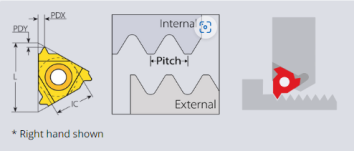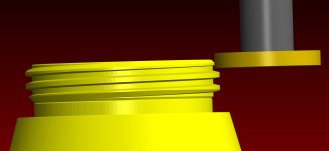Good Morning All,
We are currently looking at increasing the production volume of one of our products that includes an external 1/2-28 thread at the end of the part. In the past we have hand finished these threads in the lathe using a file to deburr the start and end of the thread, and cratex to polish/clean the threads. we will now be machining these parts in our new multitask machine, and would like to eliminate the hand deburring step from the manufacturing process.
I am looking for some guidance in simulating the finishing of using files/cratex to deburr the part, without using a higbee thread at the start and end.
Thanks for any help guys!
We are currently looking at increasing the production volume of one of our products that includes an external 1/2-28 thread at the end of the part. In the past we have hand finished these threads in the lathe using a file to deburr the start and end of the thread, and cratex to polish/clean the threads. we will now be machining these parts in our new multitask machine, and would like to eliminate the hand deburring step from the manufacturing process.
I am looking for some guidance in simulating the finishing of using files/cratex to deburr the part, without using a higbee thread at the start and end.
Thanks for any help guys!



